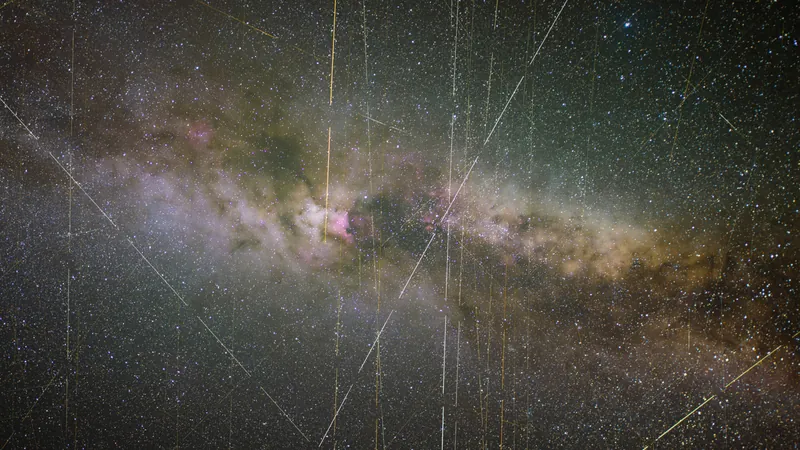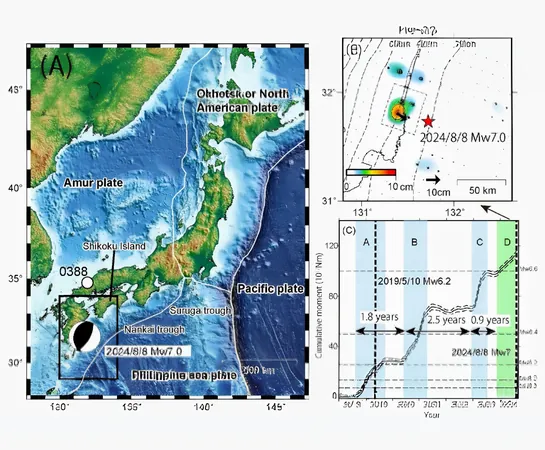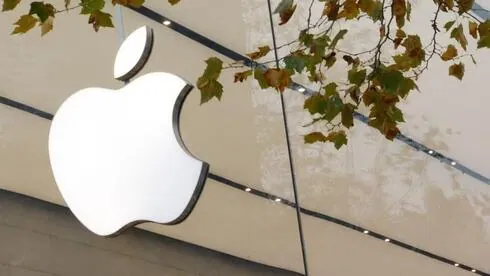
The Game-Changer for Astronomy: How Vantablack Paint Could Combat Satellite Light Pollution
2025-06-10
Author: Yu
A Revolutionary Solution to Light Pollution
Imagine a world where the serenity of our night sky isn't interrupted by streaks of man-made satellites. A breakthrough in satellite technology, Vantablack 310, a next-gen super-black paint, is promising to tackle the persistent problem of light pollution created by low-Earth orbit megaconstellations.
The Starlink Controversy
Since launching its first satellites in 2019, SpaceX's Starlink constellation has stirred up controversy among astronomers. With thousands of spacecraft reflecting sunlight and overpowering the stars, what was once a thrilling sight for skywatchers has turned into a headache for researchers.
The Upcoming Challenge for Astronomers
As the $1.9 billion Vera Rubin Observatory prepares to open its doors later this month, a staggering 40% of its imaging could be compromised by satellite streaks. With the number of satellites in orbit projected to soar into the tens of thousands, this problem is only set to worsen.
Meet Vantablack 310: The Potential Solution
Vantablack 310 has the potential to revolutionize satellite visibility. This innovative paint can cut down light reflection to a mere 2%, virtually erasing the streaks that disrupt telescope images, and has been developed in collaboration with astronomers like Noelia Noël, an astrophysicist at the University of Surrey.
Noelia Noël's Mission to Preserve the Night Sky
Noël, originally from Argentina, has been fiercely advocating for the preservation of the night sky ever since she was a child captivated by its beauty. Partnering with Surrey NanoSystems, she aims for the new ultra-black coating to be a game-changer in the fight against satellite glare.
Redefining Durability and Performance
Unlike previous coatings that were delicate and difficult to apply, Vantablack 310 is resilient and can be easily handled by satellite manufacturers. Its unique blend of carbon black and special binders ensures it withstands the harsh conditions of space while improving optical performance.
A Test in Space:
Next year, Vantablack 310 will be tested on the student satellite Jovian 1, a promising opportunity to measure its effectiveness in real-time conditions. By applying the coating to the solar panels of the satellite, researchers hope to gather insightful data on brightness.
The Future of Satellite Light Pollution
With talks already underway with satellite manufacturers, there's optimism that Vantablack 310's easy application and impressive durability will lead to widespread adoption. Noël hopes that this innovative solution will prompt necessary policy changes to keep the night sky accessible for all.
Conclusion: Keeping the Sky Open to All
As satellite technology continues to advance, protecting the beauty of our night sky is crucial. With this new paint, astronomers and advocates alike are on a mission to ensure that our celestial wonders remain visible for generations to come.


 Brasil (PT)
Brasil (PT)
 Canada (EN)
Canada (EN)
 Chile (ES)
Chile (ES)
 Česko (CS)
Česko (CS)
 대한민국 (KO)
대한민국 (KO)
 España (ES)
España (ES)
 France (FR)
France (FR)
 Hong Kong (EN)
Hong Kong (EN)
 Italia (IT)
Italia (IT)
 日本 (JA)
日本 (JA)
 Magyarország (HU)
Magyarország (HU)
 Norge (NO)
Norge (NO)
 Polska (PL)
Polska (PL)
 Schweiz (DE)
Schweiz (DE)
 Singapore (EN)
Singapore (EN)
 Sverige (SV)
Sverige (SV)
 Suomi (FI)
Suomi (FI)
 Türkiye (TR)
Türkiye (TR)
 الإمارات العربية المتحدة (AR)
الإمارات العربية المتحدة (AR)